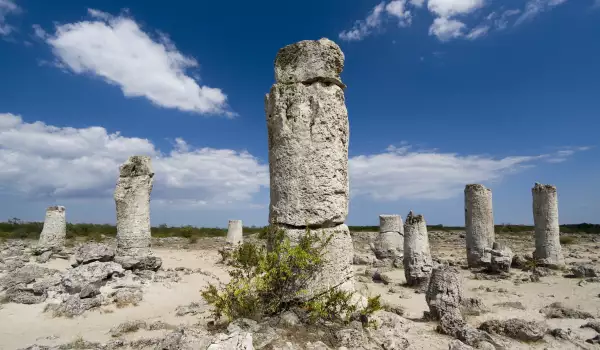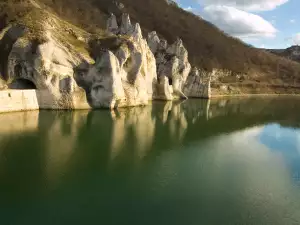Varna Stone Forest - Pobiti Kamani

In 1937, the Stone Forest was the first officially registered and protected by state landmark in the territory of Bulgaria. This natural phenomenon, brings together rock formations that have been occurring for more than 50 million years and is located only 15 km from Varna. The area is known as Devnya neighborhood, which is located north of Lake Beloslavsko. The natural phenomenon is called the Stone Forest.
The whole rock complex of Stone forest is spread on a total area of 246 hectares. This landmark is unique not only for Bulgaria but for all of Europe. Of its kind the Stone Forest is part of Varna sand - gravel desert. They are composed of limestone-sand formations in the most bizarre and interesting shapes, and placement. Some specimens of stone blocks there reache an impressive 6 meters. The stone pillars have different sizes, their height varies from 0.7 to 5.9 m and the diameter varies from 0.7 to 2.6 meters.
The pretty hypotheses and theories about the emergence and formation of the Stone Forest near Varna are as follows.

In 1855 the English geologist, Sirat, examined them and made the first engraving. Previously, the military correspondent of the Russian general, Victor Teplyakov makes his description and attempts to decipher their origin in 1828-1828 onwards.
A little later an Englishman, William Hamilton joins in on the works of the Stone Forrest in 1854. After him geologists, George goldsmiths and Franz Toula, and Prof. Bakalov. Among the names who have written research papers for the Stone Forest are the Shkorpil brothers and Prof. V. Radev.
One of the newest theories about the Stone Forest is that the columns are considered to be of microbial-carbonate which have arisen from the bottom of ancient seas. It has a total area of 70 sq. Km and the Stone Forest extends in a band of north-south direction, which is almost parallel to the beach. The width of the strip is about 5 km.

The Stone Forest accounts for about 300 large and small rock formations becoming 810 m of length and 115 m in width. Some columns are hollow in the middle, while others are thick. The light gray calcareous sandstone from which formed the Stone Forest has high carbonate content. For the strange and interesting forms of boulders, influences of external forces of nature are to blame.
Animal and plant life around the Stone Forest are not characterized by great diversity. Most often found there are, lichens, mosses and grasses. Representatives of birds are also very important. 114 bird species, including Wheatear, Tawny Pipit, turilik, owl, etc. are found near the Stone Forest.
Anywhere in the rock formations you can see various lizards and sometimes you can even find the viper. The mammals found near the Stone Forest include foxes, rabbits and others.















